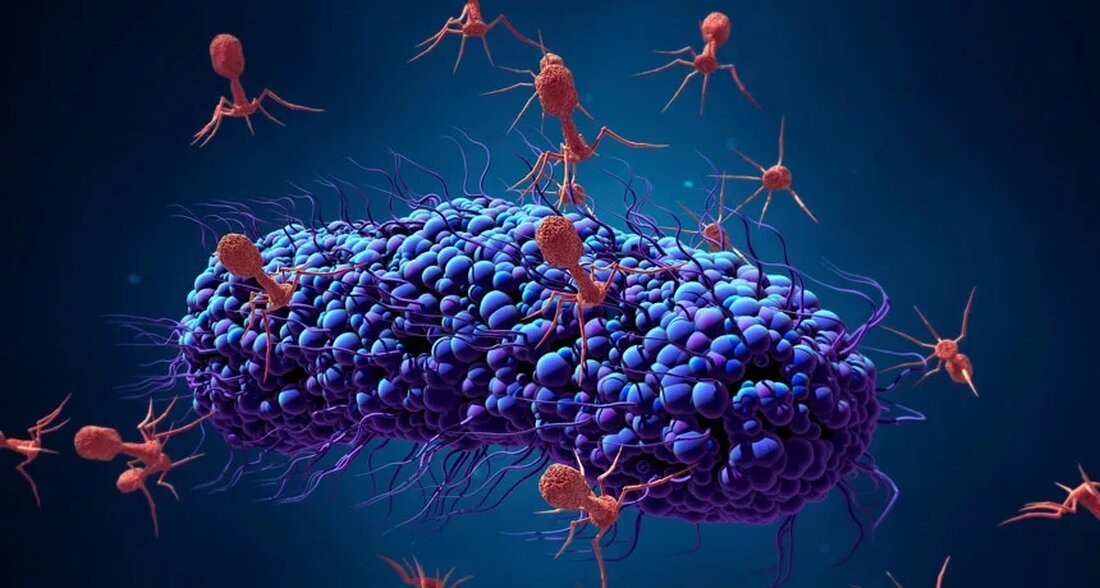Alternative to antibiotics - How do bacteriophages kill bacterial superbugs?
A research collaboration with Monash University has made an exciting discovery that may eventually lead to targeted treatments to combat drug-resistant bacterial infections, one of the biggest threats to global health. An exciting discovery that may eventually lead to targeted treatments to combat drug-resistant bacterial infections The study, led by Associate Professor Fasséli Coulibaly of the Monash Biomedicine Discovery Institute and Professor Trevor Lithgow, is published in Nature Communications. It describes using high-resolution imaging to find out how viruses called phages can attack and kill Salmonella Typhi, the causative agent of typhoid fever, and to give scientists new understanding...

Alternative to antibiotics - How do bacteriophages kill bacterial superbugs?
A research collaboration with Monash University has made an exciting discovery that may eventually lead to targeted treatments to combat drug-resistant bacterial infections, one of the biggest threats to global health.
An exciting discovery that may eventually lead to targeted treatments to combat drug-resistant bacterial infections
The study, led by Associate Professor Fasséli Coulibaly from the Monash Biomedicine Discovery Institute and Professor Trevor Lithgow, is published in Nature Communications. It describes the use of high-resolution imaging to discover how viruses called phages can attack and kill Salmonella Typhi, the causative agent of typhoid fever, and to give scientists a new understanding of how they can be used in the ongoing fight against antibiotic resistance (AMR).
The study was a collaboration between researchers at the Monash Biomedicine Discovery Institute (BDI), the Monash University Center to Impact AMR and the University of Cambridge.
Incredible “choreography”
What they saw was an incredible “choreography” by the phages as they assembled the main components of their particles: a head filled with viral DNA and a tail that was used to infect the bacteria.
"We saw how the particle's building blocks interlock in a complicated choreography. At the molecular level, the arms swing out and curl around each other to form a continuous chain that supports the phage's head," said Associate Professor Coulibaly.
"This rigid chain mail provides further protection for the phage's DNA. Surprisingly, the tail, on the other hand, remains flexible. It can bend and not break as it captures the bacteria and ultimately injects them with the phage DNA."
Phages are a class of viruses that infect bacteria
Phages are a class of viruses that infect bacteria, and each phage is specific to the type of bacteria it can kill. Phages can be purified to the point where they are approved by the FDA to treat people with bacterial infections. Documented successes have been achieved in the USA, Europe and recently Australia.
At Monash University, the Center to Impact AMR is tackling these issues and studying the types of phages needed for new “phage therapies” to treat bacterial infections.
“This finding will help us overcome one of the most critical hurdles in phage therapies, namely a precise understanding of how phages work in order to predict and accurately select the best phage for each patient infection in advance,” said Professor Lithgow.
“It could help shift phage therapies from compassionate use, where all other treatment options have been exhausted, to more widespread clinical use.”
Antimicrobial resistance (AMR) is one of the greatest threats to global health
Antibiotic resistance (AMR) is one of the greatest threats to global health, food security and economic development. It is an urgent health and humanitarian crisis in Asia that is growing in severity worldwide.
AMR affects all aspects of society and is driven by many interrelated factors, including the overuse of antibiotics and the rapid adaptability of bacteria to evolve into drug-resistant forms. There are many groups at risk for AMR infections, including COVID-19 patients wearing respirators, mothers and children during childbirth, surgical patients, people with cancer and chronic diseases, and the elderly.
The first authors of this study, Dr. Joshua Hardy and Dr. Rhys Dunstan, used the Ramaciotti Center for Cryo-Electron Microscopy at Monash University, the Monash Molecular Crystallization Facility and the Australian Synchrotron for structure determination.

 Suche
Suche
 Mein Konto
Mein Konto
